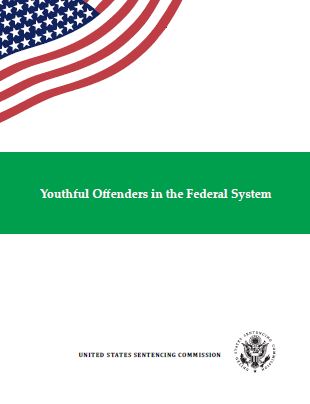Report Summary

Key Findings
- There were 86,309 offenders (18.0% of the federal offender population) age 25 or younger sentenced in the federal system between 2010 and 2015.
- The majority (57.8%) of youthful offenders are Hispanic.
- There were very few youthful offenders under the age of 18 sentenced in the federal system (52 between 2010 and 2015).
- Almost 92 percent of offenses committed by youthful offenders were nonviolent offenses.
- Similar to the overall federal offender population (or non-youthful offenders group) the most common offenses that youthful offenders committed were drug trafficking (30.9%), immigration (28.6%), and firearms offenses (13.7%).
- The average sentence for youthful offenders was 34.9 months.
- Youthful offenders were more likely to be sentenced within the guidelines range than non-youthful offenders (56.1% compared to 50.1%).
- Youthful offenders recidivated at a much higher rate than their older counterparts—about 67 percent versus 41 percent.
